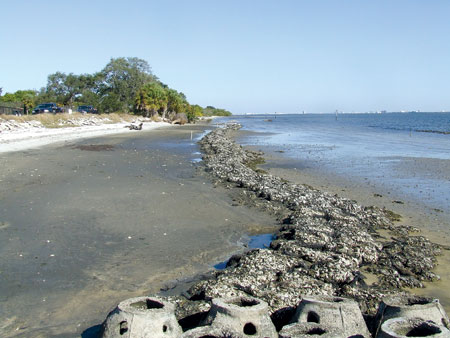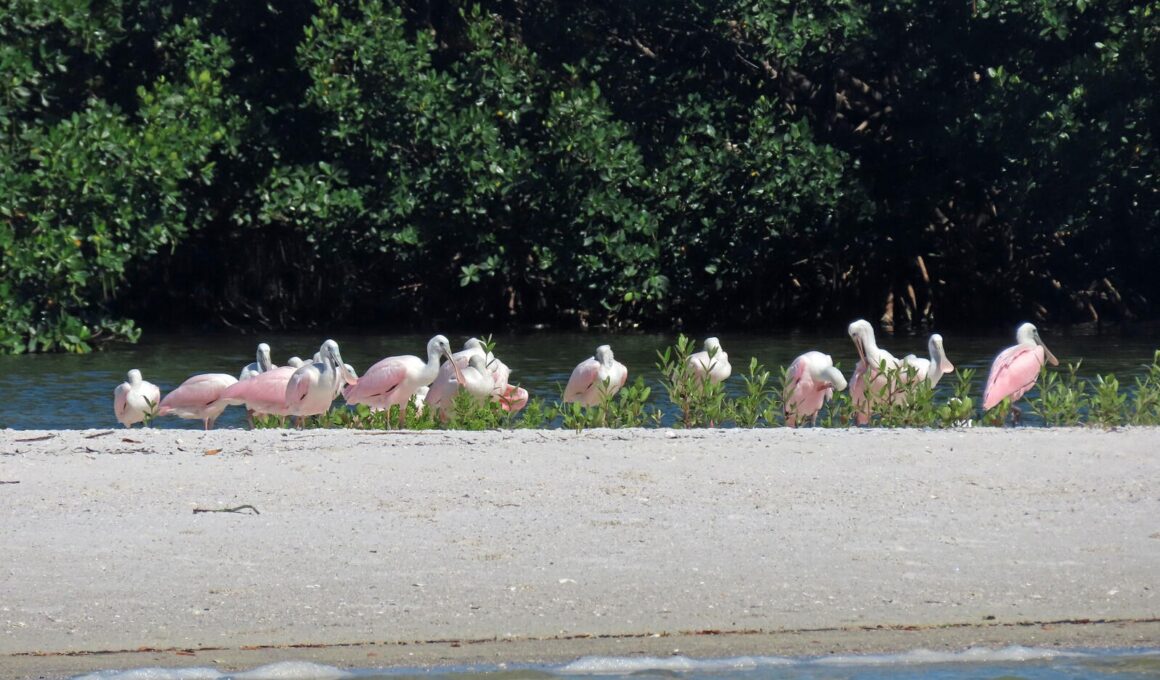A generous donation from Mahaffey Management, LLC, adds three mangrove spoil islands to the Florida Coastal Islands Sanctuaries System and brings the total number of islands up to 28. The islands, spread across Tampa and Sarasota bays, host thousands of breeding pairs of 29 species – among the largest and most diverse coastal bird populations in the state.
Islands Dot, Dash, and Dit are found on the Braden River and are important breeding and nesting sites for a mixed wading bird colony that includes roseate spoonbill, little blue heron, tricolored heron, and wood stork. Audubon staff has managed the islands since the early 1990s, conducting monitoring surveys, posting no-trespassing signs, and removing trash and other debris.
”We are thrilled to now have official ownership of this important property,” said Audrey DeRose-Wilson, director of bird conservation for Audubon Florida. “The islands present a unique opportunity for Audubon to own a regionally important waterbird roosting and nesting site that has been recognized by the Florida Fish and Wildlife Conservation Commission as a Critical Wildlife Area of statewide significance.”

Audubon will manage the islands in partnership with the State of Florida, which owns the southern half of Dash Island. Audubon plans to construct a living shoreline breakwater like the mile-long breakwater currently protecting islands from erosion at Richard T. Paul Alafia Bank Sanctuary, which is leased from and managed in collaboration with The Mosaic Company and Port Tampa Bay. The upcoming construction at Dash is possible thanks to a grant from the National Fish and Wildlife Foundation.
The first Audubon Sanctuary in Tampa Bay was established in 1934 to stop the shooting and harvest of nesting herons and ibis in Hillsborough Bay. The two original islands – Green Key and Whiskey Stump – were protected by Sanctuary Warden Fred Schultz, who saw bird populations rebound from about 700 to more than 30,000.
More islands were added almost immediately to Warden Schultz’s responsibilities: the Alafia Bank islands recently created as part of a dredge-and-fill operation, and Pine Island. Another island, Terra Ceia Bird Key (now called Washburn Sanctuary), was added in 1939. In the 1970s and early 1980s, five more islands were acquired, marking the expansion of the Tampa Bay Sanctuaries beyond the borders of Tampa Bay (Cortez Key, Whale Key and the Town Islands of Sarasota Bay).
In the 1990s, Audubon broadened its view to monitor, post, and/or patrol more than 50 islands located on Florida’s central west coast. Some species populations have continued to decline despite protections, including those of the reddish egret, American oystercatcher, and little blue heron. It is the hope of the Audubon – along with devoted volunteers and land-owning partners – that the monitoring, management and protection of these sanctuary islands will play an important role in the rebound of these feathered Tampa Bay neighbors.


